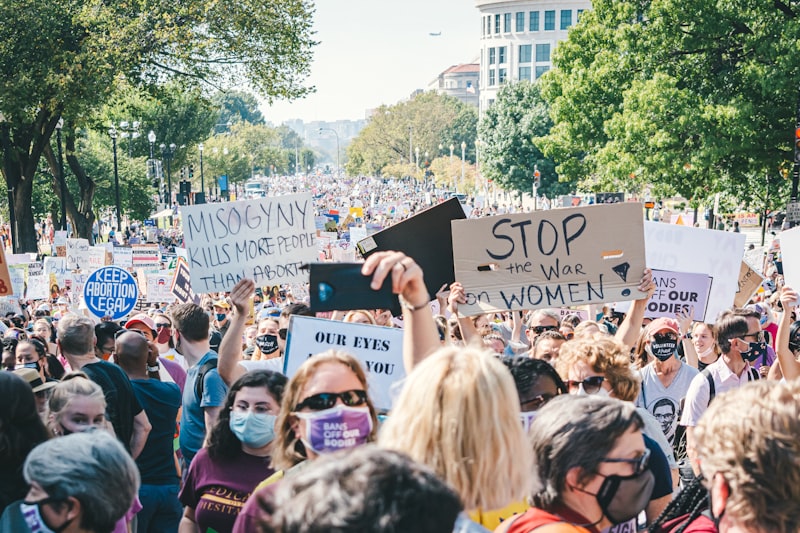
Have you ever wondered how economic policies shape the landscape for businesses? Economic policies, those rules and regulations set forth by governments to manage their economies, have a profound impact on businesses of all sizes. Think of these policies as the rules of the game that businesses must navigate to succeed.
One of the key ways economic policies influence businesses is through taxation. Tax policies dictate how much businesses must contribute to government revenues. High taxes can eat into profits, while favorable tax incentives can encourage business growth and investment. For example, tax breaks for research and development can spur innovation in tech companies, driving both economic growth and job creation.
Another crucial aspect is monetary policy, controlled by central banks. Monetary policies determine interest rates and money supply, affecting borrowing costs for businesses. Lower interest rates can stimulate borrowing for expansion, whereas higher rates may slow down investment. It’s like the throttle on a car — adjusting speed based on road conditions.
Moreover, trade policies dictate how businesses engage globally. Tariffs, quotas, and trade agreements directly impact import/export costs and market access. For businesses reliant on international markets, these policies can be game-changers, either opening up new opportunities or closing off existing ones.
Regulatory policies also play a significant role. They ensure fair competition, protect consumers, and safeguard the environment. While necessary, excessive regulations can burden businesses with compliance costs, potentially stifling innovation and growth.
Economic policies are not just bureaucratic jargon; they’re powerful tools that shape the business environment. Whether it’s through taxes, monetary measures, trade rules, or regulations, these policies influence how businesses operate and grow. Understanding their impact is crucial for businesses aiming to thrive in an ever-changing economic landscape.
Navigating Uncertainty: How Economic Policies Shape Business Strategies
Economic policies, crafted by governments and institutions, act as the currents that can either propel businesses forward or create turbulent waters. Imagine these policies as the wind that fills a sailor’s sails. When favorable, they can boost consumer confidence, stimulate investment, and spur growth across industries. Conversely, unfavorable policies might restrict spending, dampen investor sentiment, or introduce regulatory challenges.
For businesses, staying ahead requires not just reacting to policies but anticipating their impact. It’s akin to predicting the weather patterns before setting sail – essential for planning a safe and successful voyage. Companies must constantly assess how tax reforms, trade agreements, or monetary policies might affect their operations, supply chains, and financial health.
Take, for instance, a global manufacturer. A sudden tariff hike could increase production costs, necessitating adjustments in pricing or sourcing strategies. Meanwhile, a tax incentive for renewable energy could prompt investments in sustainable practices, aligning with both economic trends and environmental goals.
Moreover, economic policies don’t operate in isolation; they interact dynamically with global events and market forces. Just as a skilled navigator adjusts their route to avoid storm fronts, businesses must adapt swiftly. This agility can mean the difference between seizing opportunities and being caught off guard by economic downturns or geopolitical shifts.
From Boom to Bust: Businesses React to Shifting Economic Policies
Imagine you’re cruising along a highway, windows down, breeze in your hair—your business is thriving, profits soaring. Suddenly, a road sign appears, signaling a change ahead. Economic policies, like unexpected detours, can reroute your journey. What was once a smooth ride might now feel like navigating a maze blindfolded.
Businesses, like adaptable chameleons, react swiftly to these policy changes. When policies encourage growth and investment, companies expand boldly, hiring more hands, investing in innovation, and broadening their horizons. It’s like being at the peak of a mountain, surveying the landscape below with confidence and clarity.

Conversely, when policies tighten belts or introduce uncertainty, businesses must tighten their own strategies. Imagine sailing a ship through stormy seas—each wave a potential threat, each decision crucial. Cost-cutting becomes the mantra, innovation pauses cautiously, and hiring freezes. It’s survival mode, navigating choppy waters with grit and determination.
Take the recent shifts in tariffs or tax reforms—they’re like gusts of wind that can either fill your sails or stall your progress. Businesses, like skilled sailors, adjust their course, trim their sails, and seek new routes to prosperity.
In essence, economic policies are the unseen hands shaping our business landscapes. They’re the conductors of a grand orchestra, dictating the tempo and mood of each movement. Whether the melody is one of growth or caution, businesses must dance to its rhythm, adapting their steps with agility and foresight.
From boom to bust and back again, the journey of businesses through shifting economic policies is an epic saga. It’s a tale of resilience, innovation, and the ever-evolving quest for success in a dynamic world.
Winners and Losers: Industries Thriving (or Struggling) Under New Economic Rules
Take the tech industry, for instance. It’s not just surviving but thriving under these new economic rules. With innovations like artificial intelligence and blockchain disrupting traditional norms, tech giants are setting new benchmarks for growth and profitability. Companies are racing to harness these technologies, transforming everything from how we communicate to how businesses operate.
On the flip side, traditional retail is feeling the pinch. As e-commerce giants continue to dominate, brick-and-mortar stores are grappling with declining foot traffic and changing consumer preferences. The shift to online shopping has rewritten the rules of engagement, forcing retailers to rethink their strategies or risk being left behind.
Finance is another area seeing significant shifts. Fintech startups are redefining banking and payment systems, offering convenience and efficiency that traditional banks struggle to match. Peer-to-peer lending, digital wallets, and cryptocurrency are becoming household terms, reshaping the financial landscape with each transaction.
But it’s not just about industries; it’s about how these changes impact everyday life. Think about transportation: with the rise of electric vehicles and ride-sharing services, the automotive industry is at a crossroads. Those embracing sustainability and innovation are speeding ahead, while others face challenges in adapting to stricter environmental regulations and changing consumer demands.
In healthcare, telemedicine has emerged as a lifeline, especially in times of global crisis. The ability to consult doctors virtually has revolutionized patient care, making healthcare more accessible and efficient. Meanwhile, industries reliant on physical presence, such as travel and hospitality, have had to reinvent themselves to survive in a world where flexibility and safety are paramount.
As these industries navigate the new economic terrain, one thing is clear: adaptability is key to survival. Whether you’re a tech titan innovating the future or a traditional business reimagining its strategy, embracing change is not just an option but a necessity. The winners will be those who can anticipate shifts, innovate boldly, and connect with their audiences in meaningful ways.
Policy Shifts and Market Dynamics: Analyzing Business Adaptation Strategies
Businesses often find themselves navigating through a maze of regulatory changes and market fluctuations. Imagine a skilled navigator on a turbulent sea, adjusting sails and course to reach their destination. Similarly, companies must adjust their strategies in response to new policies or changing market conditions. This adaptability is not just a choice but a necessity for survival and growth.
One key strategy businesses employ is flexibility in operations. This involves being agile enough to pivot quickly when policies change or new market trends emerge. For instance, a company might diversify its product line or streamline its supply chain to comply with new regulations or consumer demands. This proactive approach not only mitigates risks but also opens up new opportunities for innovation and expansion.
Moreover, businesses invest in continuous monitoring and analysis of policy shifts and market trends. It’s like having a weather radar that forecasts storms before they hit. By staying informed, companies can anticipate changes and strategize accordingly. This foresight allows them to adjust pricing strategies, optimize resource allocation, or even enter new markets preemptively.
Furthermore, partnerships and collaborations play a crucial role in business adaptation strategies. Like birds flying in a V-formation to conserve energy, businesses form alliances to share resources, expertise, and risks. Collaborations with industry peers or stakeholders can provide insights into upcoming policy changes or market shifts, fostering a collective response that benefits all parties involved.
Beyond Borders: Global Trade Implications of Economic Policy Changes
Imagine economic policies as the architects of a bustling marketplace, where each tweak or adjustment can send ripples across continents. When a country decides to increase tariffs on imported goods, for instance, it’s like adding tolls to a bridge connecting nations. This move might protect local industries but could also spark retaliatory tariffs elsewhere, potentially leading to higher prices for consumers or disrupted supply chains that span oceans and continents.
Conversely, when policies favor free trade and reduce barriers, it’s akin to opening wider lanes on that same bridge. Suddenly, goods flow more freely, businesses have access to cheaper inputs, and consumers enjoy a broader range of products at competitive prices. This stimulates competition and innovation on a global scale, fostering economic growth that transcends national boundaries.
These policy shifts can also influence currency values. A decision to raise interest rates, for example, might strengthen a country’s currency, making its exports more expensive and potentially affecting demand abroad. This delicate dance of exchange rates can either bolster or challenge international trade relationships, depending on how markets react and adjust.
Moreover, economic policies aren’t just about tariffs and currency fluctuations; they also shape regulatory environments. Changes in regulations regarding intellectual property, labor standards, or environmental protections can profoundly impact how and where goods are produced and traded worldwide. Businesses must navigate these regulatory landscapes to stay competitive and compliant across diverse markets.
The global trade implications of economic policy changes are vast and multifaceted. They touch everything from the prices consumers pay for everyday goods to the strategic decisions made by multinational corporations. Understanding these dynamics is crucial for businesses and policymakers alike as they navigate an increasingly interconnected global economy.
Innovation in Adversity: How Businesses Innovate Amidst Economic Policy Challenges
Imagine a business as a ship navigating turbulent waters. Economic policies can be sudden storms or unexpected currents, threatening stability. Yet, some businesses not only weather the storm but thrive. How? They innovate.
Innovation isn’t just about new products or technologies; it’s a mindset. It’s about seeing challenges as opportunities. When economic policies introduce hurdles like tariff changes or regulatory shifts, businesses that innovate look for new routes. They may streamline operations, find new suppliers, or develop alternative markets.
Take the example of a small manufacturer hit by increased import tariffs. Rather than scaling back, they innovate by redesigning their product to use locally sourced materials. This not only cuts costs but also appeals to consumers looking for sustainable options.
Moreover, innovation in adversity isn’t limited to product or service changes. It can mean restructuring business models. For instance, during economic downturns, businesses may pivot to subscription-based models to stabilize revenue streams and foster customer loyalty.
But how do businesses foster this culture of innovation amidst economic uncertainty? It starts with leadership that encourages creativity and flexibility. Employees are empowered to experiment and adapt. Failures aren’t setbacks but learning opportunities.
Think of innovation as a muscle that grows stronger with use. Businesses that continuously innovate build resilience. They anticipate policy changes and proactively adjust strategies. It’s like a chess game where each move isn’t just a reaction but a calculated step towards long-term success.
Economic policy challenges aren’t roadblocks but forks in the road. Businesses that innovate don’t just survive; they thrive in adversity. By embracing change, fostering creativity, and adapting swiftly, they navigate uncertain waters and emerge stronger than before.
Policy Paradox: Balancing Growth and Regulation in Business Environments
Imagine you’re steering a ship through turbulent waters. On one side, there’s the allure of rapid growth, expansion into new markets, and innovation-driven profit margins. On the other side, looming regulations, compliance frameworks, and legalities threaten to steer you off course. How do businesses maintain momentum while staying on the right side of the law?
The key lies in understanding the symbiotic relationship between growth and regulation. Regulations are not merely roadblocks; they are guardrails that protect businesses, consumers, and the broader economy. They ensure fair competition, safeguard against exploitation, and promote sustainability.
Take the fintech industry, for example. Fintech companies revolutionize finance with innovations like blockchain and digital currencies. Yet, they must navigate a web of financial regulations to protect investors and prevent financial crime. Striking a balance allows these companies to thrive within a structured framework, fostering trust and stability in an evolving market.
Similarly, environmental regulations compel industries to adopt sustainable practices, reducing their carbon footprint while fostering innovation in green technologies. This dual approach not only mitigates environmental impact but also opens new avenues for growth in renewable energy and eco-friendly products.
The Policy Paradox is not a hurdle but an opportunity for businesses to innovate responsibly. By embracing regulatory compliance as a core tenet of their strategy, businesses can enhance their reputation, attract ethical investors, and build long-term resilience.
In essence, balancing growth and regulation requires foresight, adaptability, and a proactive approach to compliance. It’s about navigating the currents of change while staying true to your business values and long-term vision. As businesses evolve, so too must their strategies to embrace the Policy Paradox as a cornerstone of sustainable growth in today’s dynamic business environment.
Frequently Asked Questions
How Do Trade Policies Impact Global Business Activities
Learn how trade policies influence global business operations, including tariffs, regulations, and trade agreements. Understand their impact on market access, costs, and international competitiveness.
What Role Do Monetary Policies Play in Business Success
Learn how monetary policies impact business success, influencing interest rates, inflation, and economic growth. Explore how these policies shape borrowing costs, consumer spending, and investment decisions, crucial for businesses navigating economic environments.
How Can Fiscal Policies Influence Business Operations
Learn how fiscal policies impact business operations. Understand how government decisions on taxes, spending, and borrowing affect economic activities, investment decisions, and market conditions.
What Strategies Can Businesses Employ to Navigate Changing Economic Policies
Discover effective strategies for businesses to adapt to changing economic policies, ensuring resilience and growth. Learn practical approaches to monitor policy changes, engage in proactive advocacy, diversify market exposure, and maintain financial flexibility.
What are Economic Policies and How Do They Affect Businesses
Learn how economic policies influence businesses with this concise FAQ. Discover what economic policies entail, how they impact operations, and why staying informed is crucial for business strategy.


